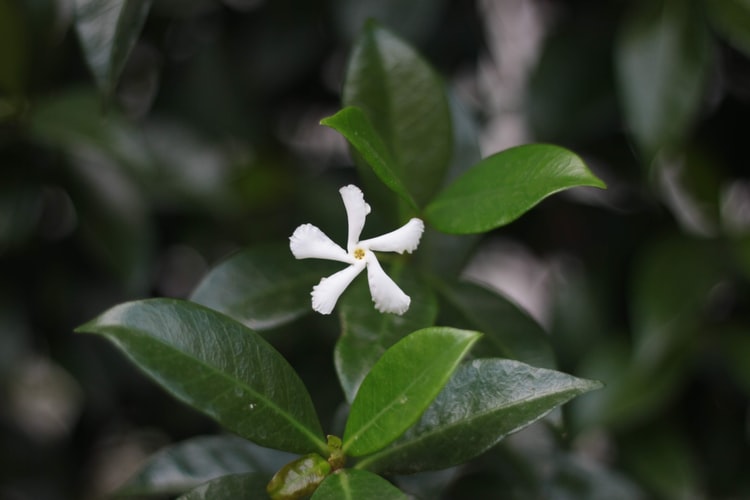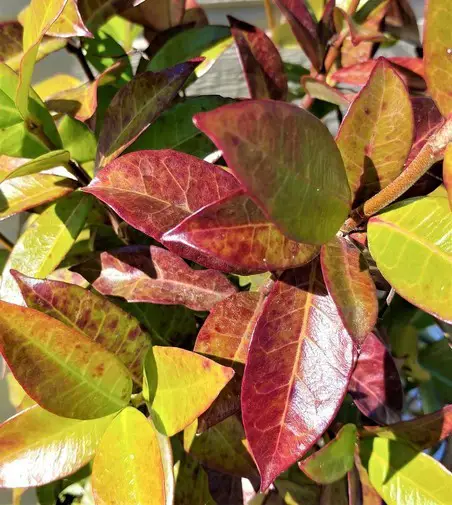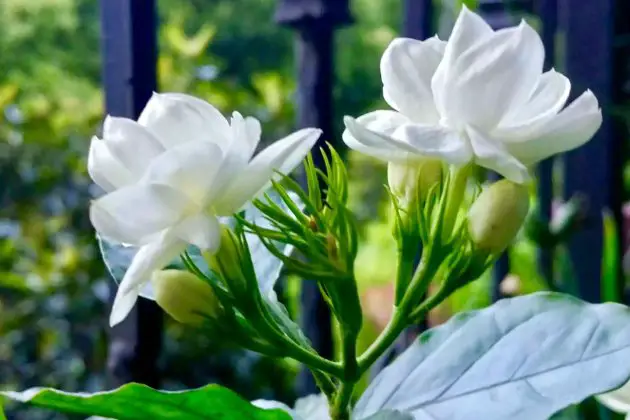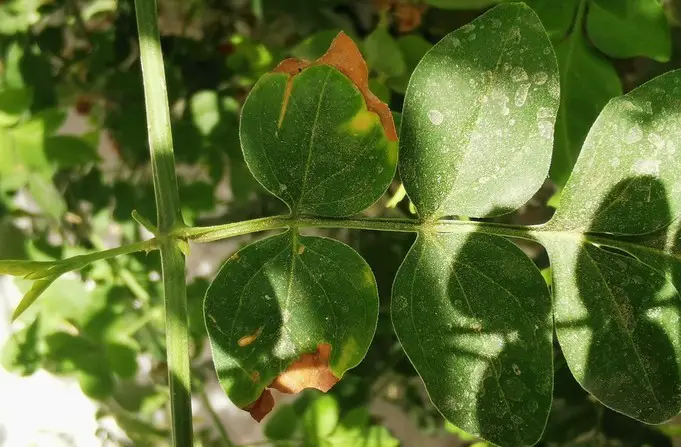Powdery mildew is a fungal disease that affects a wide range of plants, including vegetables, fruits, flowers, and ornamental plants. Powdery mildew gets its name from the white or grayish powdery growth that appears on the leaves, stems, and sometimes even the flowers of infected plants.
Causes of Powdery Mildew
Powdery mildew thrives in warm and humid conditions, making it more prevalent during the spring and summer months. The disease spreads through airborne spores, which can travel long distances and infect healthy plants. Several factors contribute to the development of powdery mildew:
- Poor air circulation around plants
- High humidity levels
- Cool nights and warm days
- Overcrowding of plants
- Stress on plants due to drought or inadequate nutrition
These conditions create an ideal environment for the fungi to grow and spread, leading to powdery mildew infections in susceptible plants.
Understanding the causes of powdery mildew is crucial in effectively treating and preventing this common plant disease.
1. Environmental Conditions
Powdery mildew thrives in specific environmental conditions. It prefers moderate temperatures ranging from 60°F to 80°F (15°C to 27°C) and high humidity levels. Lack of air circulation and overcrowding of plants can also contribute to the development and spread of powdery mildew.
To prevent powdery mildew, ensure proper spacing between plants to allow for adequate air circulation. Avoid overcrowding plants, especially in humid areas, as this can create a favorable environment for the disease to thrive.
2. Plant Susceptibility
Certain plants are more susceptible to powdery mildew than others. Some common examples include roses, cucumbers, squash, zucchini, melons, phlox, and lilacs. These plants are more likely to develop powdery mildew if the environmental conditions are favorable.
When planning your garden, consider selecting plant varieties that are resistant to powdery mildew. Resistant varieties are less likely to be affected by the disease, even under favorable conditions. Check with your local nursery or gardening center for recommendations on powdery mildew-resistant plants.
3. Fungal Spores
Powdery mildew is caused by fungal spores that are easily spread from plant to plant. These spores can be carried by wind, insects, or even on gardening tools and clothing. Once the spores land on a susceptible plant, they germinate and start to grow, leading to the characteristic powdery growth.
To prevent the spread of powdery mildew, practice good garden hygiene. Clean and sanitize your gardening tools regularly, especially if you have been working with infected plants. Avoid working in the garden when the foliage is wet, as this can facilitate the spread of spores.
Symptoms of Powdery Mildew
Identifying powdery mildew early is crucial for effective treatment. Look out for the following symptoms:
| Symptom | Description |
|---|---|
| White or grayish powdery patches | The characteristic powdery growth on leaves, stems, and flowers |
| Yellowing or browning of leaves | Infected leaves may turn yellow or brown and eventually wither |
| Stunted growth | Plants may exhibit reduced growth and fail to reach their full potential |
| Distorted or curled leaves | Leaves may become distorted or curl up due to the infection |
These symptoms can vary depending on the plant species and the severity of the infection. It is important to regularly inspect your plants for any signs of powdery mildew.
Treating Powdery Mildew
If you notice powdery mildew on your plants, it’s important to take action promptly to prevent further spread and damage. Here are some effective methods to treat powdery mildew:
1. Prune Infected Parts
Start by pruning and removing the infected parts of the plant. This helps to reduce the spread of the disease and improves air circulation around the remaining healthy foliage.
When pruning, make clean cuts and dispose of the infected plant material in sealed bags. Do not compost the infected material, as this can potentially spread the disease.
2. Use Fungicidal Sprays
Fungicidal sprays can be effective in treating powdery mildew. Look for products specifically labeled for powdery mildew control and follow the instructions carefully. Apply the spray to both the upper and lower surfaces of the leaves, as well as the stems.
It’s important to note that fungicides should be used as a last resort and only when necessary. Always follow the instructions on the product label and take appropriate safety precautions when handling and applying fungicides.
3. Organic Remedies
If you prefer organic methods, there are several remedies you can try. These natural remedies can help suppress the disease and prevent further spread:
- Neem oil: Neem oil is derived from the neem tree and has antifungal properties. Dilute neem oil according to the instructions on the product label and spray it on the affected plants.
- Baking soda solution: Mix 1 tablespoon of baking soda, 1 teaspoon of liquid soap, and 1 gallon of water. Spray the solution on the affected plants, focusing on the areas with powdery mildew.
- Milk spray: Mix 1 part milk with 9 parts water and spray it on the affected plants. The proteins in milk have been found to have antifungal properties.
These organic remedies may need to be applied more frequently than chemical fungicides, so regular monitoring of the plants is essential.
Preventing Powdery Mildew
Prevention is key when it comes to powdery mildew. By implementing the following practices, you can reduce the risk of powdery mildew in your garden:
1. Proper Plant Spacing
Ensure adequate spacing between plants to promote air circulation. This helps to prevent the buildup of humidity and reduces the chances of powdery mildew development.
Refer to the spacing recommendations for each plant variety to ensure proper air circulation. Avoid overcrowding plants, especially those that are more susceptible to powdery mildew.
2. Watering Techniques
Avoid overhead watering, as wet foliage can create a favorable environment for powdery mildew. Instead, water at the base of the plants or use drip irrigation to keep the leaves dry.
Watering in the morning allows the foliage to dry out during the day, reducing the chances of powdery mildew development. Avoid watering in the evening or at night, as the prolonged moisture can promote fungal growth.
3. Regular Plant Inspection
Regularly inspect your plants for any signs of powdery mildew or other diseases. Early detection allows for prompt treatment and minimizes the risk of spreading the disease to other plants.
Look for the characteristic white or grayish powdery growth on the leaves, stems, and flowers. If you notice any signs of powdery mildew, take immediate action to prevent further spread.
4. Proper Plant Nutrition
Maintaining healthy plants through proper nutrition is essential in preventing powdery mildew. Provide balanced fertilization and ensure your plants receive adequate sunlight to promote strong growth and resistance to diseases.
Healthy plants are better equipped to resist powdery mildew and other diseases. Follow a regular fertilization schedule and provide the necessary nutrients based on the specific requirements of each plant variety.
| Treatment Methods | Pros | Cons |
|---|---|---|
| Fungicidal Sprays | Effective in controlling powdery mildew | May require repeated applications |
| Organic Remedies | Environmentally friendly | May not be as potent as chemical fungicides |
5. Biological Control
– Beneficial insects like ladybugs and lacewings can help control powdery mildew by feeding on the fungal spores.
– Using biological fungicides containing Bacillus subtilis can also be effective.
By implementing these strategies, you can effectively manage powdery mildew and protect your plants from this common fungal disease. Regular monitoring, early detection, and timely intervention are key to preventing severe infections and ensuring the well-being of your plants.
By understanding the causes of powdery mildew and implementing effective treatment and prevention methods, you can keep your plants healthy and free from this common fungal disease. Regular monitoring, proper plant care, and timely action are key to maintaining a thriving garden.
Frequently Asked Questions (FAQs)
Q: Can powdery mildew be harmful to humans?
A: Powdery mildew is primarily a plant disease and does not pose significant health risks to humans. However, it is best to avoid direct contact with the affected plants to prevent any potential allergic reactions or respiratory issues.
Q: Can powdery mildew spread from plant to plant?
A: Yes, powdery mildew can easily spread from plant to plant, especially in humid conditions. It is important to take immediate action when you notice signs of powdery mildew to prevent further spread and protect neighboring plants.
Q: Can powdery mildew be prevented entirely?
A: While it may be challenging to completely prevent powdery mildew, implementing preventive measures such as proper plant spacing, regular inspection, and good plant nutrition can significantly reduce the risk of powdery mildew in your garden.
Q: Are chemical fungicides safe to use on edible plants?
A: When using chemical fungicides on edible plants, it is important to carefully read and follow the instructions provided by the manufacturer. Some fungicides may have specific waiting periods before harvest to ensure the safety of consuming the treated produce.
Q: Can powdery mildew survive the winter?
A: Powdery mildew typically does not survive cold winter temperatures. However, the fungal spores can overwinter on plant debris or in the soil. Proper garden cleanup and sanitation practices can help reduce the chances of powdery mildew recurrence in the following growing season.
By understanding the causes of powdery mildew and implementing effective treatment and prevention methods, you can keep your plants healthy and free from this common fungal disease. Regular monitoring, proper plant care, and timely action are key to maintaining a thriving garden.




